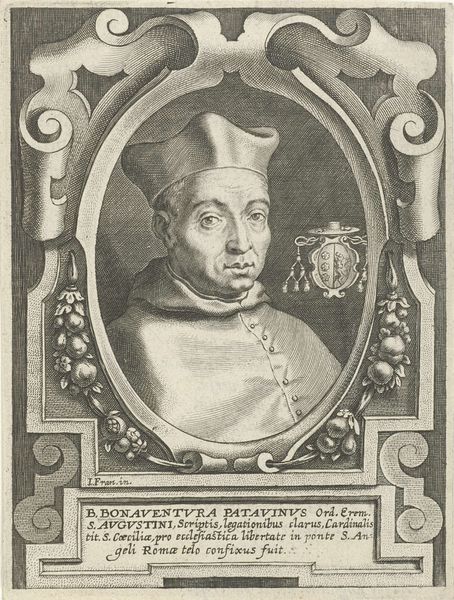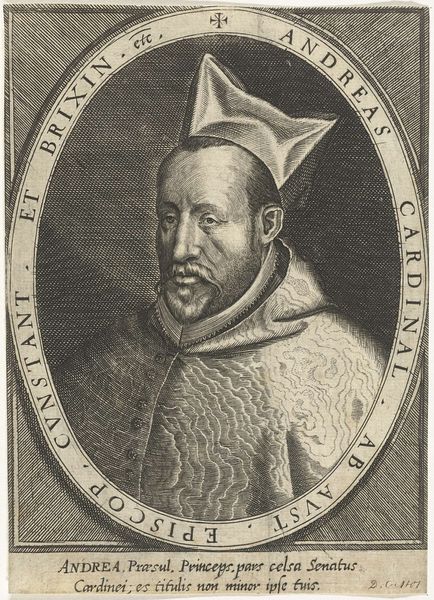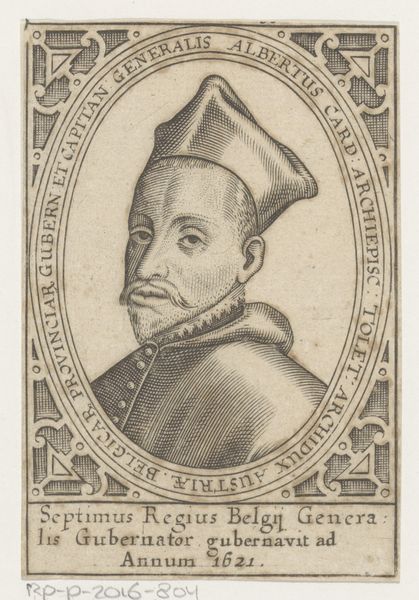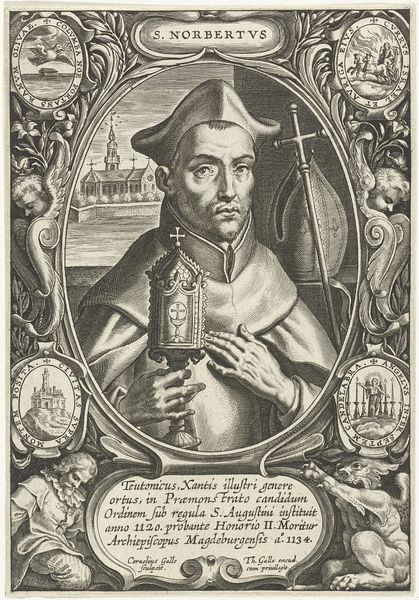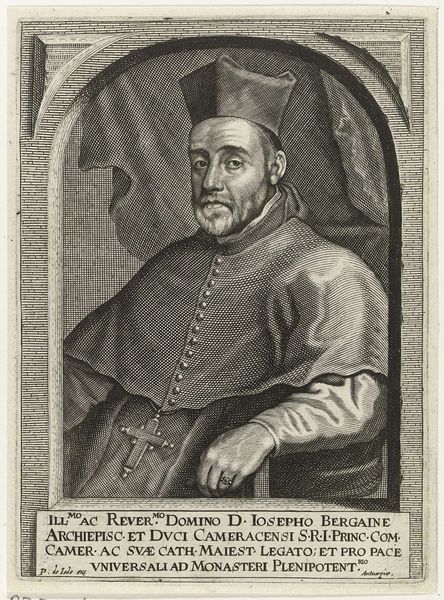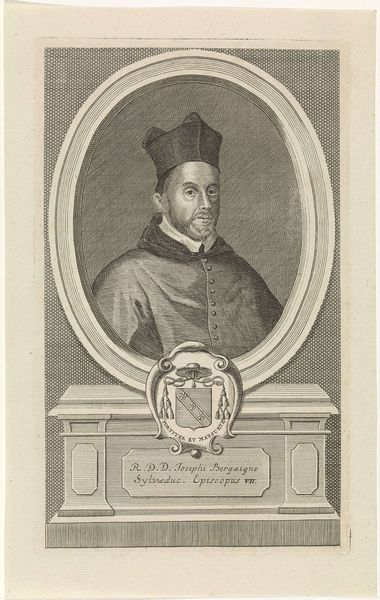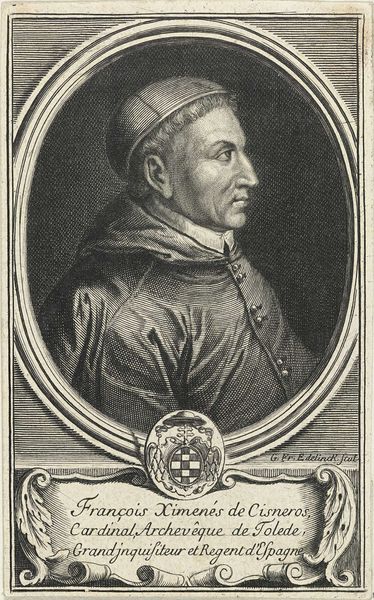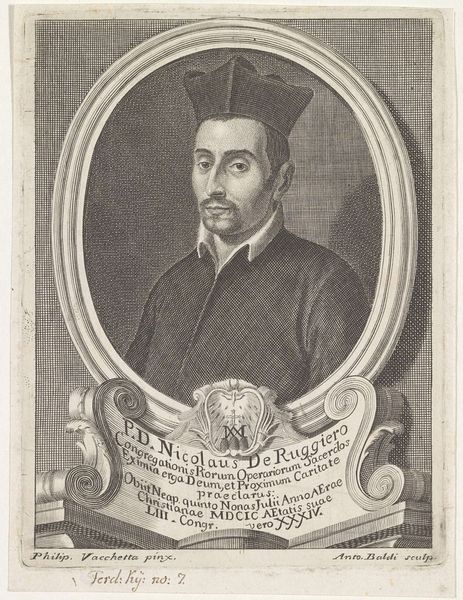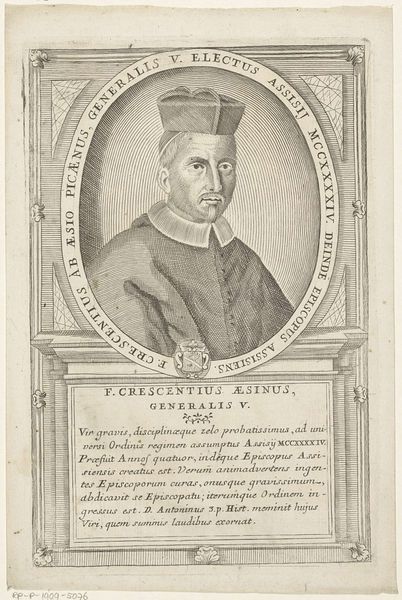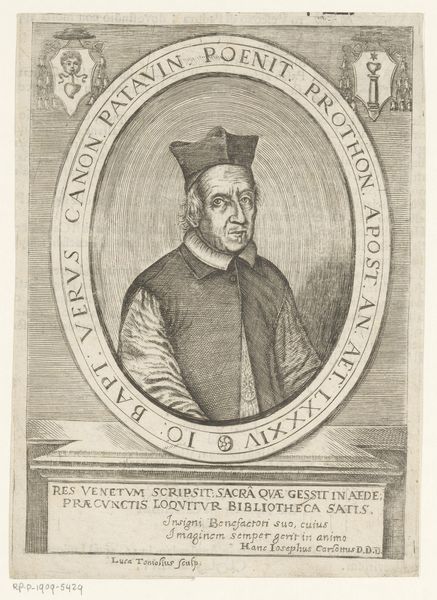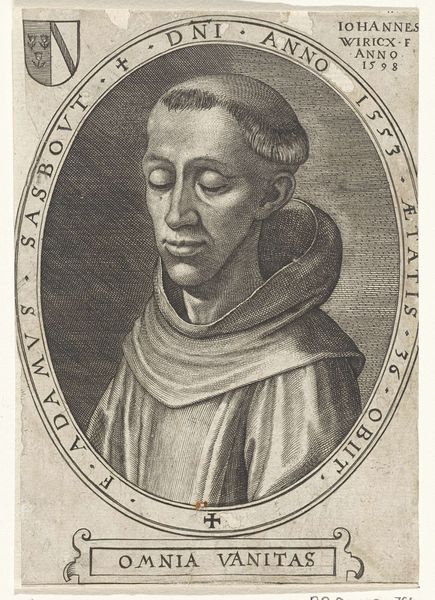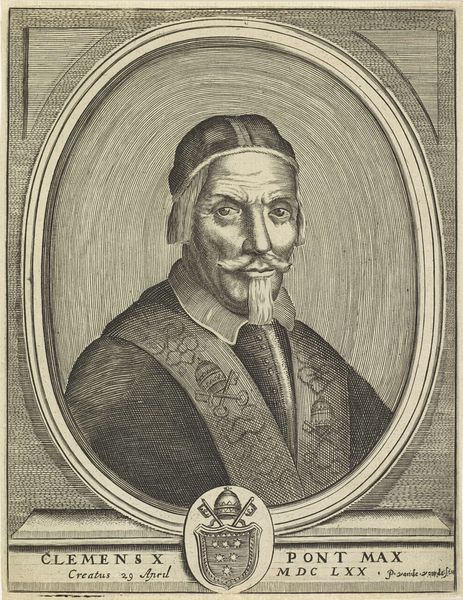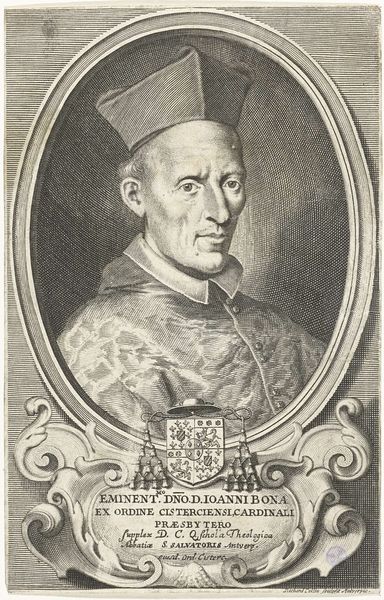
Portret van Philip Willem van Beieren, bisschop van Regensburg 1597 - 1604
0:00
0:00
print, engraving
#
portrait
# print
#
old engraving style
#
11_renaissance
#
portrait reference
#
northern-renaissance
#
academic-art
#
engraving
Dimensions: height 187 mm, width 127 mm
Copyright: Rijks Museum: Open Domain
Editor: This is a striking engraving, "Portret van Philip Willem van Beieren, bisschop van Regensburg," created between 1597 and 1604 by Dominicus Custos. It’s housed here at the Rijksmuseum. I'm fascinated by the detail achieved through the engraving process. What do you find particularly compelling about this portrait? Curator: Let’s consider the printmaking process itself. The labor involved in creating the detailed lines of the engraving, the conscious choice of materials, speaks to a very specific socio-economic context. Think about the skill required, the tools used, and the purpose of such an image. Why reproduce an image this way? Editor: I guess printmaking allowed for wider distribution compared to a painted portrait. It democratized the image, making it accessible to more people. Curator: Exactly. This reproduction isn't simply about replicating an image. It’s about power, dissemination of information, and the rise of a visual culture. We must ask ourselves: Who was the target audience? What message was the print intended to convey about Philip Willem and his position within the church and society? The very act of engraving, of making multiple copies, alters the meaning of the portrait. Editor: So it's not just a likeness, but a carefully crafted statement designed to influence and inform its viewers? Curator: Precisely! Consider how the labor involved elevates the status of the subject through the skill of the artisan and the ability to disseminate that status widely. The material itself, the ink and paper, became a vehicle for propagating power and influence. Editor: I hadn't really considered how the method of reproduction impacts the reading of the work. Thanks!
Comments
No comments
Be the first to comment and join the conversation on the ultimate creative platform.
